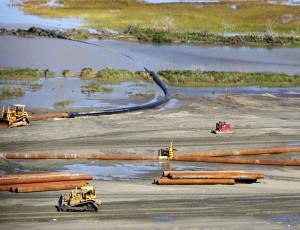The Trustees have released a final comprehensive, integrated, ecosystem restoration plan for the Gulf of Mexico. It is based on our thorough assessment of impacts to the Gulf's natural resources and the services they provide following the Deepwater Horizon oil spill. We are now entering a 30-day waiting period, which will last until March 21, 2016. We will not make a final decision to adopt the plan until this period is complete. We received more than 6,300 public comments on the draft plan, and we would like to thank the public for all their input. We considered all the comments in preparing the final plan. If adopted, the final plan would allocate up to $8.8 billion allocated for natural resource injuries under a proposed settlement with BP. We have proposed to accept this settlement, which would resolve BP's liability for natural resource injuries stemming from the spill. The types of restoration in the plan will address a broad range of impacts at both regional and local scales. Together, these efforts will restore wildlife and habitat and increase recreational opportunities in the Gulf. The five goals of the plan are to: 1) restore and conserve habitat; 2) restore water quality; 3) replenish and protect living coastal and marine resources; 4) provide and enhance recreational opportunities; and 5) provide for monitoring, adaptive management, and administrative oversight to support restoration implementation. The restoration types are:
1. Wetlands, coastal, and nearshore habitats 2. Habitat projects on federally managed lands 3. Nutrient reduction 4. Water quality 5. Fish and water column invertebrates 6. Sturgeon 7. Submerged aquatic vegetation 8. Oysters 9. Sea turtles 10. Marine mammals 11. Birds 12. Mesophotic and benthic (lowlight and ocean floor) communities 13. Provide and enhance recreational opportunities
In finalizing this plan to address the ecosystem-level injuries caused by this spill, we analyzed both the potential environmental benefits and impacts of restoration alternatives. The plan does not identify specific projects for each restoration type, but lays out a framework for developing future project-specific restoration plans. The public will have the opportunity to comment on these subsequent restoration plans.


